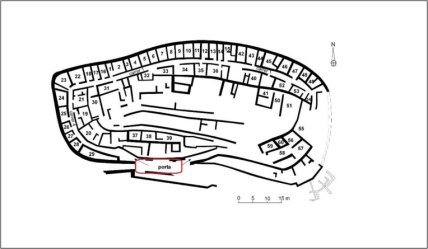A brutal tradition reveals life in the Iron Age: what secrets the skulls of ancient humans uncovered.
In the middle of the first millennium BC, the Iberian Peninsula underwent significant and rapid changes. It is known that during this time the first cities emerged, and a clear hierarchy began to develop within society. Alongside this, the practice of decapitating individuals and displaying their heads publicly became widespread in the region.
Although this may seem horrifying from a modern perspective, for researchers, it presents a priceless opportunity to learn more about life in those distant times. A new study focusing on this very practice has been published in the Journal of Archaeological Science.
Excavations were conducted in the ancient cities of Puch Castellar (near Barcelona) and Ulíastret (near Girona). The issue is that during the Iron Age, cremation of bodies was commonly practiced there, making it challenging for contemporary scientists to analyze remains due to the lack of physical artifacts. Consequently, the brutal practices of ancient peoples provide crucial information for archaeologists.

It is known that the local inhabitants interacted with Phoenician and Greek traders, which led to a marked complexity in the social structure, an increase in social inequality, and the emergence of fortified cities. Alongside this, the practice of displaying severed heads became prevalent. Why was this done? There may be three explanations — ritual significance, military trophies, or a means of intimidation to maintain discipline.
These heads could be hung on the walls of houses, inside dwellings, or in special pits for sacrifices. Moreover, some of them show signs of soft tissue removal prior to display. This suggests that there may have been specialized practitioners in these cities for this purpose (still think you have a bad job?).
The city of Puch Castellar was founded in the 5th century BC but was abandoned during the Second Punic War (around 200 BC). Skulls were found at the main gates. Scientists examined four skulls and determined that they were not locals, but possibly prisoners or enemies killed beforehand.

Ulíastret was established in the 7th-6th centuries BC and was abandoned in the 3rd-2nd centuries BC. It served as the capital of the Indikets and had a complex infrastructure, including a water supply system. Three skulls were found here, one belonging to a local inhabitant, while the other two were foreigners.
Both cities may have ceased to exist due to the Roman invasion.
Researchers note that nearly all skulls belonged to men, indicating that the victims were not chosen randomly. However, female skulls have been found in other locations.
"In Puch Castellar, the severed heads in public places could demonstrate power, honor important community members, or intimidate enemies. In Ulíastret, the placement of heads in open areas suggests they were significant residents, revered by the local society," the study states.
Overall, scholars suggest that the practice of decapitation was part of a complex of social control, political propaganda, or military ideology.
As previously reported, archaeologists in the Netherlands discovered a pagan worship site where “devil's money” was sacrificed. This finding is valuable not only for shedding light on the lives of people who lived in that region during pre-Christian times but also possibly indicates a transition between eras.